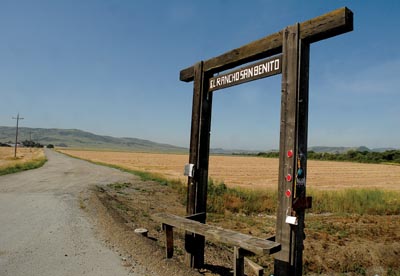If you are running for public office, the safest stance is to say, “I can make a difference” – assuring voters that there are better prospects ahead – but the truth is that it is hard to be optimistic about the future of San Benito County. Some residents will have a good life, but we are unlikely to prosper as a community unless we reject the same old methods being put forward by incumbents and candidates that always result in the status quo; frankly, we can’t afford it.
Without exceptional leadership, all we can expect for San Benito County is more stratification. The local education system will continue to crank out students – 55 percent of whom are marginally qualified and unprepared to succeed in a competitive world. The unit cost increases for public services with continue to outpace inflation. Unfunded mandates will throttle the stagnant local economy. And an increased dependency on the debt-ridden state and federal government for handouts will cement us as beggars, and “beggars can’t be choosers.”
During the nine years from 2005 through 2013, $349.5 million, about 57%, of the county’s revenue came as “Aid from other governments.” At the same time, 77% of total expenditures, $487.7 million, was spent on public protection, health and sanitation, and public assistance. I’d argue that those programs are necessary, but they do not move us forward. Most of them are the cleanup costs of our underlying problems; unemployment, under-education, criminality, abuse and addiction.
To make matters worse, we continue to spend a lot more than we take in. The state attacked its spending problem by just passing on mandates with a note that says, “You pay for it.” In the last six years (2008 – 2013), San Benito County ran an average annual deficit of $6.3 million, more than $38 million in red ink.
What are our answers so far? Well, someday we may get a one-time $3 million educational revenue augmentation fund (ERAF) payment that has been in dispute for years; we will raise our transient occupancy tax, and finally get around to the 1% sales tax in the unincorporated areas; taken all together that might get us to even for a single year at a low level of service. Naturally, politicians are hoping for rising home values, which raise tax revenues, but they are forgetting that higher taxes reduce disposable income; you can’t eat your home and the employee unions are just waiting for any money that shows up in the reserve account.
We are committed to a system we cannot sustain, but there are so many vested interests, personal and political, that we cannot get anyone to relax their death grip for the greater good. To do anything more than mark time will take real leadership, a willingness to compromise for progress, but with a bedrock commitment to roll over those who are merely obstructionist no matter the political repercussions.
Time is not on our side. The increased stratification of our county residents comes as local groups fight for ever-decreasing government resources. The economic and social gap between the younger, poorer, under-educated city dwellers on one side and the older, wealthier, better-educated rural/suburbanites on the other side grows ever wider. One group wants more opportunity and economic rewards. The other group wants more social order, stability and individual responsibility; meanwhile, the county cannot find the cement to hold them all together. The result is that we are anything but a community, and our lack of overall progress shows up as a lack of agreement and political will.










